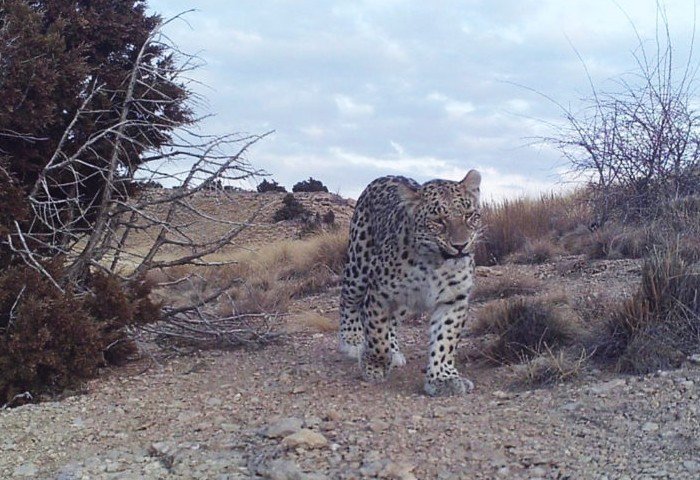Conservationists in Central Asia have made significant progress in protecting endangered species, including the Persian leopard (Panthera pardus tulliana), Center for Large Landscape Conservation reported.
The Central Asian Ecological Connectivity Initiative (CEECI),led by Tatjana Rosen, a Conservation Science Fellow at the Center for Large Landscape Conservation, has been working with local partners in Turkmenistan and Kazakhstan to track and protect the leopards.
According to Mangystau media, in Kazakhstan, camera traps have captured images of a single leopard, nicknamed “Tau Sheri” (Spirit of the Mountains). The leopard was first recorded in November 2020 and was last seen in the winter of 2021. It is believed that the leopard may have migrated to areas with greater access to water during the summer months.
In Turkmenistan, camera traps have recorded nine distinct leopards, including a female with two cubs. The traps have also captured images of a Pallas’s cat, which had not been seen in the region since 1940.
To the south of the Big Balkan range, in the Western Kopetdag Mountains and camera traps have captured images of a small population of Kulan. Kulans in Turkmenistan are only found in two very small populations, Center for Large Landscape Conservation reported.
The camera trap data is being used by conservationists to assess the status of these endangered species and to develop plans to protect them. CEECI is working to grow collaboration across this globally important biodiversity hotspot and has, among other progress, yielded important scientific evidence about the presence of the Persian leopard in Turkmenistan and Kazakhstan.
The organization is also working to increase awareness of the importance of these species and to promote sustainable development in the region.












30635-90x604.jpg)





